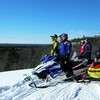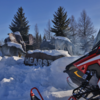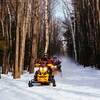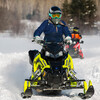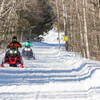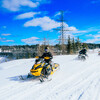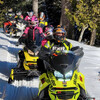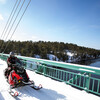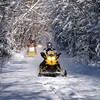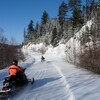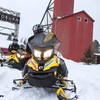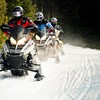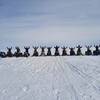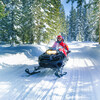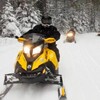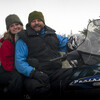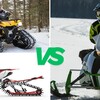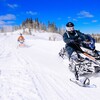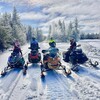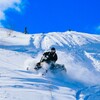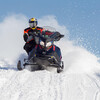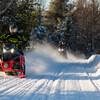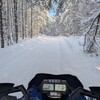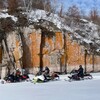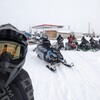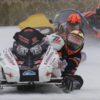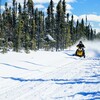
A Good Start to the Season

It’s that time of year again: Black Friday Sales, Santa Claus Parades, and, for some of us, the first real sign of winter—snowmobile maintenance needing taking care of. ’Tis the season for snowmobiling in Ontario. The trails maintained by the Sunset Trail Riders in the backcountry of Northwest Ontario connect us to lakes where we ice fish, logging roads with the promise of deep snow to play in, and a few important places we like to stop and rest, refresh, and laugh with the locals.

Is there a better place to hold a meeting than on Northwest Ontario snowmobile trails?
Most of these trails go well beyond service areas, so sled maintenance is especially important, as is checking your trail maps for fuel stops, if there are any! Ditto on knowing the lake and river ice conditions before crossing.

Know before you go when it comes to lake crossings
Awakening the Beast
If you’re a sledder and you’re fortunate to have electric start, reviving your passion for the sport each season begins by charging the battery and applying the paddles to your slumbering ride!
Our 2-stroke Arctic Cat Panther is a classic, according to the Ontario Federation of Snowmobile Clubs (OFSC). Many sledders have of course switched to that wonder of modern snow tech, the 4-stroke. Either machine should awaken if you fogged the engine and added a fuel stabilizer to the premium fuel in the tank when you put it to bed last year. We did both, but even so there’s trouble as the starter won’t engage, so a pull on the starter recoil is required. Ouch. It hurts already. Sleds like to run. Sitting idle for long periods, especially if stored outside, allows rust, plant life, mice, and bugs to hamper the revival process.
Maintaining Your Ride for a Longer Season

A Ski-Doo Renegade Backcountry will take care of you out here
Mike fondly recalls his father Dennis pulling maintenance duty to keep his two sons happy riding a pair of matching yellow Ski-Doo Elans. Dennis transferred the maintenance gene to Mike’s older brother Craig, who became the complete “sledhead,” able to maintain his machine better than most people can with the help of a dealer repair shop. When Craig recently traded in his Ski-Doo Renegade Backcountry 600, it was so shiny and well maintained that the dealer felt guilty haggling about the price.
Having experience maintaining your own ride comes in handy when you break down on the trail. To keep your sled in pre-season shape, follow the manufacturer’s maintenance recommendations in your sled’s manual, or take “Precious” to your local dealer’s maintenance shop.
What the Experts Say

When in doubt, take your sled to Trevor Tittlemier of K-Sports Marine
Trevor Tittlemier, service manager at K-Sports Marine in Kenora, recommends beginning with the essentials and doing a lot of checking. “Run up the engine and check its operation, check the drive belt and clutches, as well as the brakes, chain case, and track drive. You should also take a look at the undercarriage and sliders, adjusting tracks if required, along with the steering, skis, and carbides.” For 4-stroke engines, he emphasizes keeping an eye on the engine oil level and condition. For 2-strokes, checking the oil injection system operation is a must.
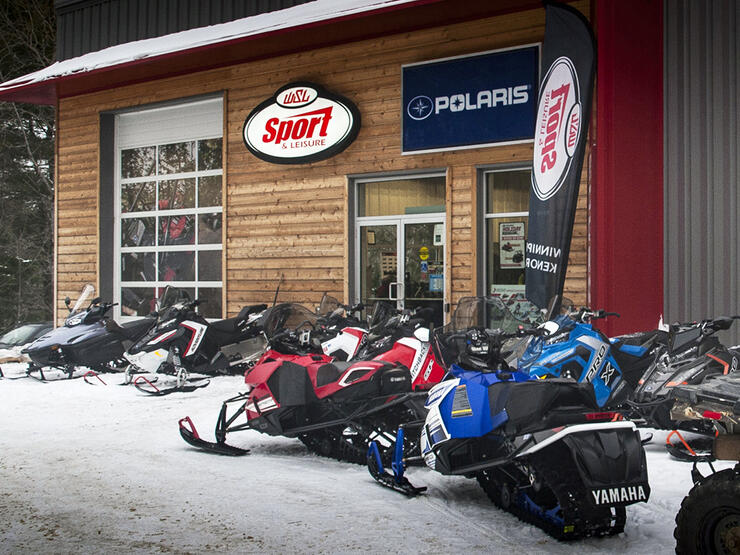
Lots of sleds for sale at WSL Sport & Leisure in Kenora, Ontario
Bad gas and ethanol in regular fuel is another big issue for a snowmobile waiting for winter, according to Robert Sprange, customer service manager at WSL Sport & Leisure, also in Kenora. “Run premium and add fuel stabilizer, drain carbs if applicable in the spring, and your ride should roar to life,” he said. “If you’re a proud owner of something very new, or not confident in your own ability in the wrench department, a shop with factory trained technicians is always a good idea.”
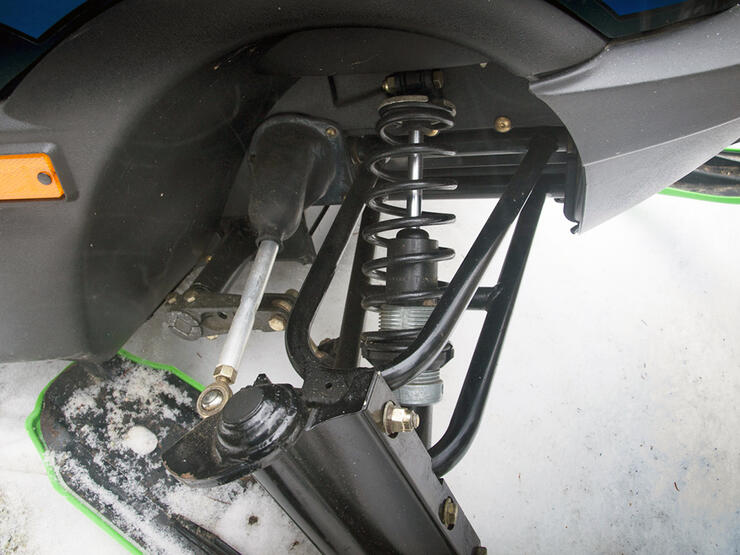
Be sure to grease everything in the steering system
The repair shops have seen it all
When it comes to sled maintenance and neglect, these guys have seen it all. “We've seen people wear their rear suspension rails out when they don't realize the track sliders are worn, to the point that the track is now running on the metal suspension rails,” Tittlemier said. “This can be quite costly, as it means you need to replace the entire rear suspension rails as opposed to just the sliders.”

Align and adjust the track, check sliders
The best way to prevent breakdowns is to keep on top of maintenance and inspect your sled after every ride. Sprange says, “Check your oil levels and wearable items as often as you can. Most wearable items will show signs of wear before breaking down. It’s also a good idea to keep the machine clean and free of ice and snow buildup.”

New plugs and a drive belt just to make sure
Tips for Riding in Northwest Ontario
Advice for some of the unique challenges posed to riders in Northwest Ontario? “Definitely have an extra fuel container/storage rack, as there aren’t many fuel stations close to our trail systems,” said Tittlemier. He also suggests having extra storage for food, extra mitts, toques, etc., as well as another battery booster pack. “A lot of 4-stroke machines are only electric start (no pull start), so we recommend having a small battery booster pack in case your battery dies on the trail.”

A dog riding a Cat
Winter is now coming fast and, hopefully, lakes and rivers will freeze over soon so we can head out for a decent ride. Are we ready? Not really, according to our sources. Hopefully, Mike's big brother will show up and perform some miracles soon.
All photos: Mike Fournier
Recommended Articles

The Complete List of Snowmobile Events in Ontario 2025-2026
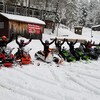
The Best Snowmobile-Friendly Lodges
Snowmobiling Winter Weather Forecast 2025-2026
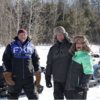
I Rode the Explorers Snow Tour in Ontario and Here’s What It Was Like

Why Ontario is One of the Best Snowmobile Destinations in the World
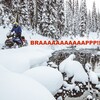
11 TikToks That Prove Ontario is the Best Place To Go Snowmobiling

5 Weekend Snowmobile Getaways Near the GTA
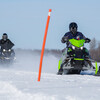
31 Ways To Get In The Know About Snowmobile Trail Riding in Ontario

A Beginner's Guide to Snowmobile Lingo

